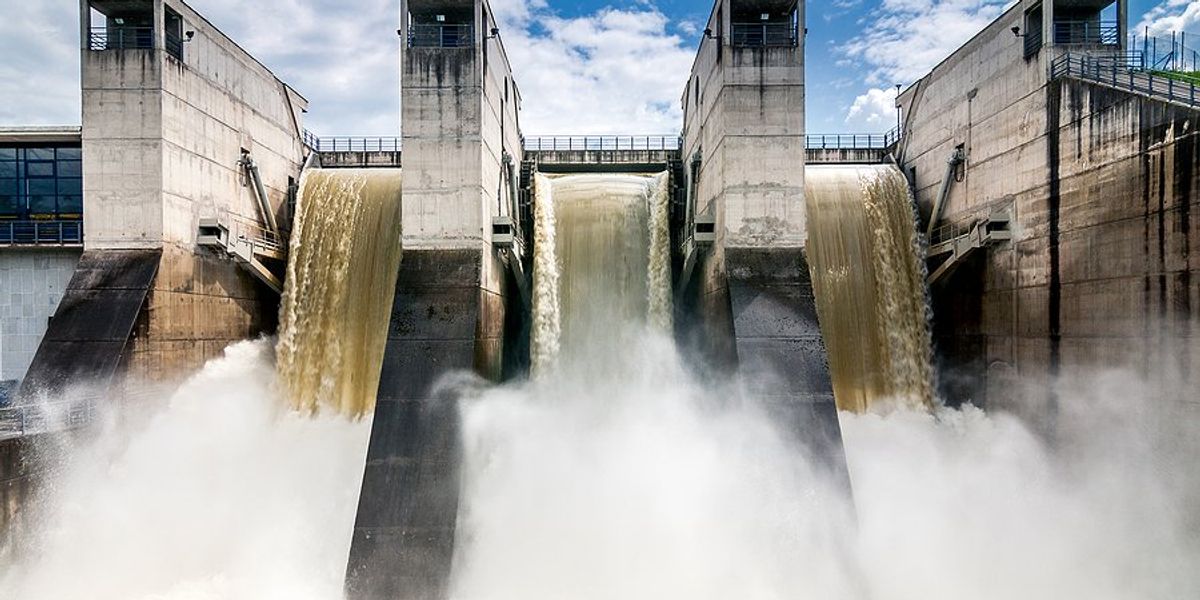droughts
Somalia's climate crisis is worsening long-standing challenges
Despite being one of the world's poorest and most conflict-ridden nations, Somalia's top climate advisor remains hopeful for the country's future despite the impacts of climate change.
In short:
- Climate change is intensifying Somalia’s droughts and floods, worsening resource scarcity and fueling local conflicts.
- Around 4 million people, displaced by conflict and climate crises, now live in makeshift refugee camps with little international aid.
- Somalia is investing in renewable energy, with local businesses and communities taking steps to adapt to climate challenges.
Key quote:
“There is no respect if you don’t have a gun. The herders who lead their animals into the farm stay back when they see my weapon.”
— Sheik Don Ismail, Somali farmer.
Why this matters:
Somalia’s escalating climate challenges are pushing its population into deeper conflict and poverty, threatening millions with displacement, hunger, and violence. Addressing these issues requires urgent international support.
Related coverage:
Wildfires devastate Brazil’s Pantanal, threatening rare species
Brazil’s Pantanal wetlands are being ravaged by record wildfires, endangering countless animals, including vulnerable species like jaguars and giant anteaters.
In short:
- The Pantanal, the world's largest tropical wetland, is burning due to severe droughts and climate change.
- The fires have killed or injured many animals, including rare jaguars and hyacinth macaws.
- Scientists fear the damage to the ecosystem may be irreversible if the fires continue.
Key quote:
“We’re watching the biodiversity of the Pantanal disappear into ash. It’s being burned to a crisp.”
— Gustavo Figueirôa, biologist, SOS Pantanal
Why this matters:
The Pantanal is one of the planet’s most biodiverse regions. Its destruction could lead to the extinction of several species and the loss of an irreplaceable natural environment.
Extreme weather is worsening Africa's cholera crisis
Relentless extreme weather in Africa has led to severe cholera outbreaks, killing thousands and affecting hundreds of thousands more.
Sebabatso Mosamo, Farai Mutsaka, and Gerald Imray report for The Associated Press.
In short:
- Since late 2021, more than 6,000 people have died and nearly 350,000 have been infected with cholera in southern and East Africa.
- Extreme weather, including cyclones, floods, and droughts, has increased the incidence of cholera by contaminating water sources.
- A global shortage of cholera vaccines has exacerbated the crisis, particularly in poorer countries that are most affected.
Key quote:
"The outbreaks are getting much larger because the extreme climate events are getting much more common."
— Tulio de Oliveira, South Africa-based disease scientist
Why this matters:
Floods not only spread cholera but also destroy crops, leading to food insecurity and malnutrition, which weakens immune systems and makes populations more vulnerable to diseases. Conversely, droughts deplete water sources, pushing people to use contaminated water for drinking and cooking.
UN: Droughts hit women and girls hardest in vulnerable areas
In poor and rural regions around the globe, women and girls bear the brunt of drought's impacts, underscoring the need for water strategies to address their unique challenges, according to the United Nations.
In short:
- The UN's world water development report calls for enhanced global cooperation on water resources to mitigate conflicts and improve conditions for women and girls.
- Access to clean water and safe sanitation significantly affect women's and girls' education and safety in disadvantaged areas.
- Conflicts over water, exacerbated by climate change, pollution and overuse, pose risks of local and regional disputes, impacting food security and health.
Key quote:
"As water stress increases, so do the risks of local or regional conflict."
— Audrey Azoulay, director general of UNESCO
Why this matters:
Climate-related water stress significantly impacts communities worldwide, but its effects tend to be more acute for women and girls, who often bear the brunt of environmental crises. Due to traditional roles and socio-economic factors, women and girls are primarily responsible for water collection in many cultures. This task becomes increasingly arduous and time-consuming as water scarcity, exacerbated by climate change, forces them to travel longer distances.
Bangladesh is on the front lines of a water crisis driven by climate change and politics. There, as in many other countries, women are made especially vulnerable by safe drinking water shortages.
Harnessing urban stormwater could revolutionize city water management
Cities in the United States have the untapped potential to capture a significant amount of stormwater, which could lead to more sustainable water resource management.
In short:
- Urban planning historically treated stormwater as a nuisance, leading to innovative infrastructure developments to manage it sustainably.
- The Pacific Institute reports that American cities generate 59.5 million acre-feet of stormwater annually, a significant potential water source.
- “Sponge city” methods and smarter infrastructure can aid in utilizing stormwater, mitigating climate change impacts on water resources.
Key quote:
"There really is no reason why stormwater capture shouldn't be up there on the list of water sources for all communities in the country that are looking to secure their long-term supplies."
— Bruk Berhanu, senior researcher at the Pacific Institute
Why this matters:
Effective stormwater management is pivotal for health outcomes, as it ensures a resilient water supply amidst intensifying droughts and floods due to climate change, and plays a crucial role in urban sustainability.
As of 2021, stormwater infrastructure in the U.S. has a grade of "D" from the American Society of Civil Engineers.
Study reveals climate change may expand locust swarms into new areas
A recent study highlights the potential expansion of locust swarms into new regions due to global warming, posing significant threats to agriculture and food security.
In short:
- Global warming is likely to increase locust habitats by 5%-25% by 2100, especially in west India and west central Asia.
- Extreme weather conditions, such as droughts and heavy rains, are conducive to locust breeding and swarming.
- The expansion of locust swarms could severely impact food security and livelihoods in vulnerable regions.
Key quote:
If the global temperature keeps rising, it "may create favorable conditions for locust development in previously low-temperature regions."
— Xiaogang He, assistant professor, National University of Singapore
Why this matters:
This research underscores an intersection of climate change and food security. As locust swarms potentially move into new areas, they threaten the livelihoods of millions, highlighting the urgency of addressing global warming and its far-reaching impacts on our ecosystem and health.
Be sure to read: It's not weather – it's climate disruption.



















